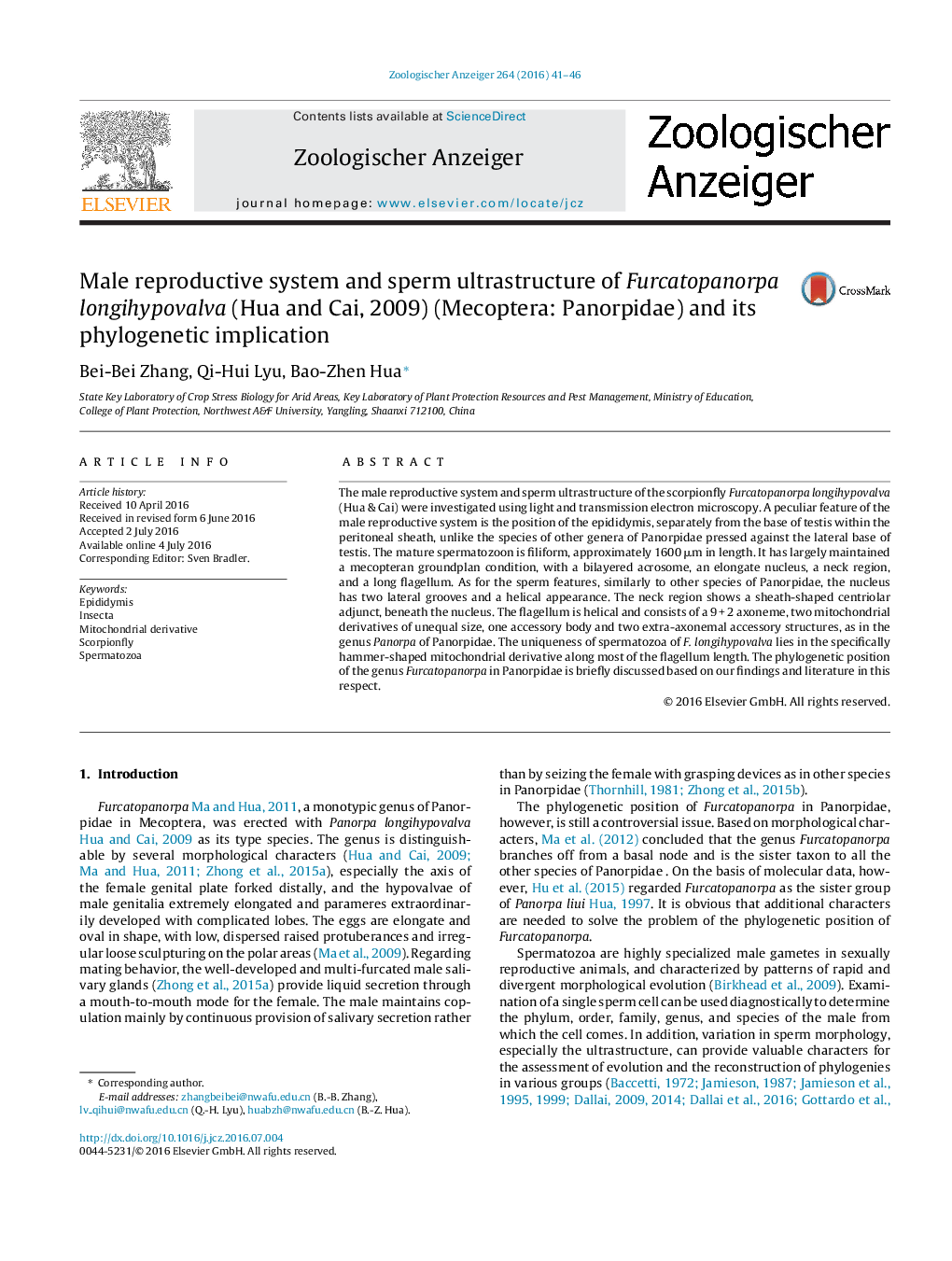| کد مقاله | کد نشریه | سال انتشار | مقاله انگلیسی | نسخه تمام متن |
|---|---|---|---|---|
| 2790445 | 1568611 | 2016 | 6 صفحه PDF | دانلود رایگان |
The male reproductive system and sperm ultrastructure of the scorpionfly Furcatopanorpa longihypovalva (Hua & Cai) were investigated using light and transmission electron microscopy. A peculiar feature of the male reproductive system is the position of the epididymis, separately from the base of testis within the peritoneal sheath, unlike the species of other genera of Panorpidae pressed against the lateral base of testis. The mature spermatozoon is filiform, approximately 1600 μm in length. It has largely maintained a mecopteran groundplan condition, with a bilayered acrosome, an elongate nucleus, a neck region, and a long flagellum. As for the sperm features, similarly to other species of Panorpidae, the nucleus has two lateral grooves and a helical appearance. The neck region shows a sheath-shaped centriolar adjunct, beneath the nucleus. The flagellum is helical and consists of a 9 + 2 axoneme, two mitochondrial derivatives of unequal size, one accessory body and two extra-axonemal accessory structures, as in the genus Panorpa of Panorpidae. The uniqueness of spermatozoa of F. longihypovalva lies in the specifically hammer-shaped mitochondrial derivative along most of the flagellum length. The phylogenetic position of the genus Furcatopanorpa in Panorpidae is briefly discussed based on our findings and literature in this respect.
Journal: Zoologischer Anzeiger - A Journal of Comparative Zoology - Volume 264, September 2016, Pages 41–46
